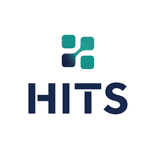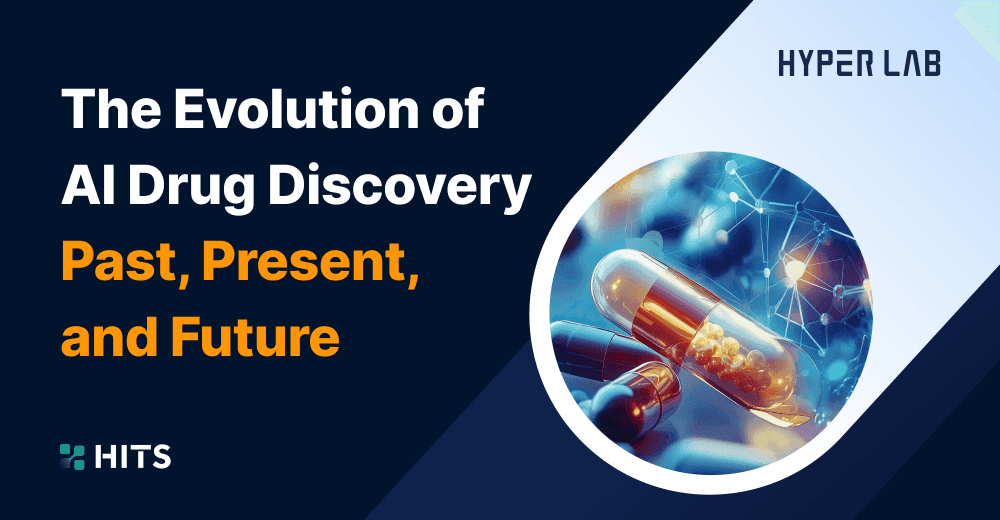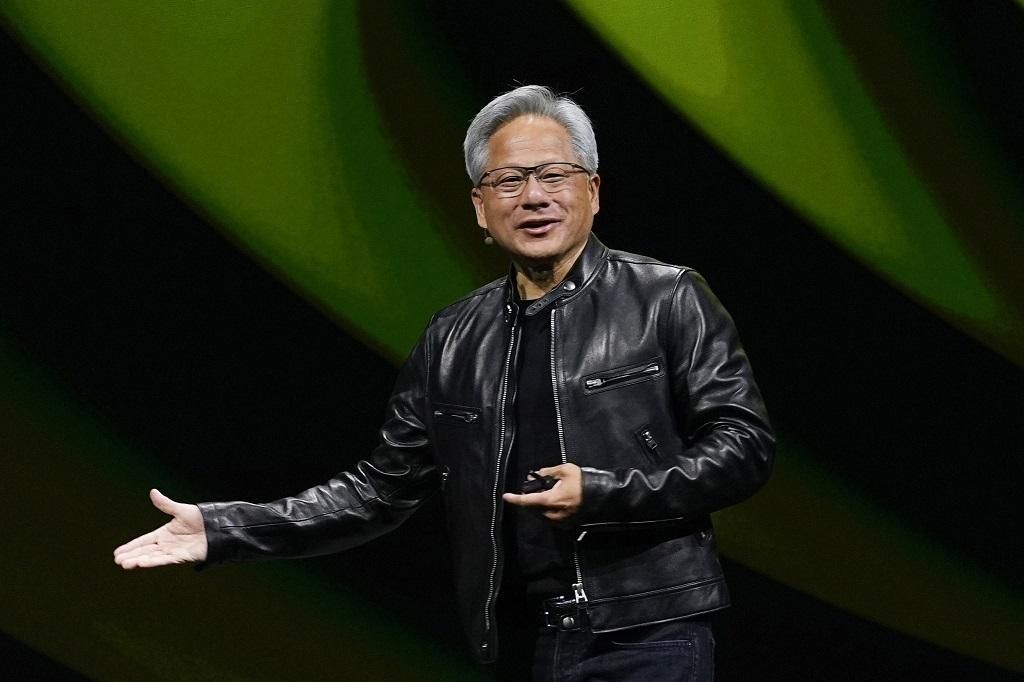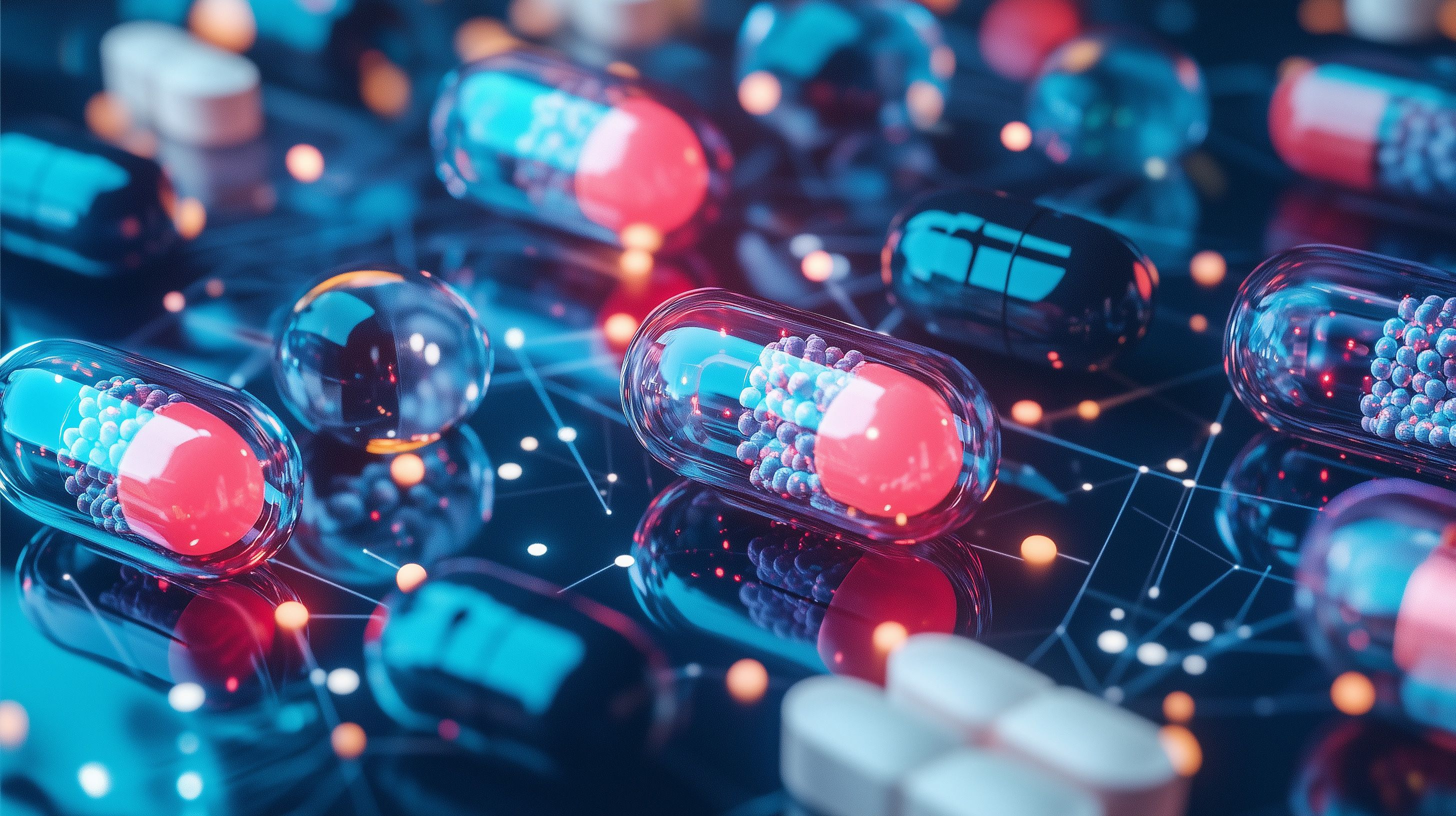The Evolution of AI Drug Discovery: Past, Present, and Future


The Next Big Thing After ChatGPT: AI-Driven Drug Discovery
Hello, we’re the HITS HyperLab team. These days, global leaders are focusing on countless technologies and industries, but one area stealing the spotlight is undoubtedly AI-driven drug discovery. The 2024 Nobel Prize in Chemistry awarded to Demis Hassabis, CEO of Google DeepMind, is a testament to this. His creation, AlphaFold, has brought groundbreaking changes to the life sciences. So, when did AI drug discovery begin? Where does it stand today, and what might its future look like? In this post, we’ll take a journey through its past and present while envisioning what lies ahead.
Why AI Drug Discovery Is Gaining Attention
In 1928, a scientist stumbled upon a mold that led to the creation of penicillin, the world’s first antibiotic. That discovery was a stroke of luck, but humanity no longer relies on chance to combat diseases—we’ve forged a powerful tool called drug discovery. Today, artificial intelligence (AI) is revolutionizing this tool, earning global attention. AI is accelerating the drug development process, cutting costs, and unlocking the potential for personalized treatments. NVIDIA’s CEO, Jensen Huang, captured this shift perfectly when he said, “If I were a student again, I’d study human biology,” highlighting how the fusion of AI and biology could reshape the future.

The Next Big Thing After ChatGPT: The Past of AI-Driven Drug Discovery
The history of AI-driven drug discovery has unfolded alongside the evolution of computer technology. To be precise, early computer-based drug development differs from today’s AI, but it can be viewed as the foundational technology that paved the way for modern AI drug discovery.
- 1960s: The introduction of QSAR (Quantitative Structure-Activity Relationship) models marked the first steps toward computer-based drug development.
- 1980s: Physics-based CADD (Computer-Aided Drug Design) emerged, ushering in significant technological advancements.
- 1990s: CADD platforms like Schrödinger were commercialized, expanding their reach across the industry.
- 2010s: The rise of deep learning spurred the creation of AI drug discovery startups like Recursion and Insilico Medicine. In 2019, Insilico showcased AI’s potential by advancing an AI-designed treatment for idiopathic pulmonary fibrosis into Phase 2 clinical trials.
- 2020s: Google DeepMind’s AlphaFold2 revolutionized protein structure prediction, and in 2024, its creators, Demis Hassabis and John Jumper, received the Nobel Prize in Chemistry, elevating AI’s stature in the field.
Looking back, the history of applying modern AI techniques to drug discovery is relatively short. However, the rapid pace of progress in that brief time is remarkable, driving transformative innovation in drug development.
The Next Big Thing After ChatGPT: The Present of AI-Driven Drug Discovery
In 2025, AI-driven drug discovery has firmly established itself as a cornerstone of the biotech industry. Large-scale projects are emerging rapidly across the globe.
- Global Trends: Google DeepMind founded Isomorphic Labs, which is now conducting joint research worth $3 billion with Novartis and Eli Lilly. OpenAI is partnering with Sanofi and ramping up investments in startups, while Zyra secured a $1 billion investment alongside Nobel laureate David Baker. Insilico Medicine has achieved tangible success, with its AI-designed drug showing positive results in Phase 2a clinical trials.
- Business Models: Independent drug development, collaborations with pharmaceutical companies, SaaS (Software as a Service) platforms, and hybrid models combining these approaches are gaining traction.
Today, AI drug discovery stands at a pivotal moment of global competition and technological innovation.

The Next Big Thing After ChatGPT: The Future of AI-Driven Drug Discovery
So, how will AI-driven drug discovery evolve moving forward? Many experts predict that AI will dramatically enhance both the speed and precision of drug development. Beyond that, by integrating with robotic technology, it could automate the entire process from design to production and even enable the creation of personalized drugs tailored to individual patients’ health conditions.
- Accelerated Development: AI is expected to directly design drugs up to the clinical trial stage, speeding up the release of treatments for fields like oncology, cardiovascular diseases, and neurodegenerative disorders. Demis Hassabis has forecasted that “within two to three years, many AIs will be creating new drugs.”
- Physical AI: By combining AI predictions with compound synthesis and robotic lab automation, accuracy and data acquisition will see groundbreaking improvements. AI will evolve into an ‘AI agent’ capable of providing real-time feedback.
- Multimodal AI and Virtual Cells: Fusing diverse data—protein structures, multi-omics, and imaging—will enable the creation of ‘digital twins’ (virtual cell models), paving the way for personalized drug development.
Moreover, OpenAI CEO Sam Altman has expressed strong optimism, stating, “AI will be a tremendous boon to human health.” As such, AI is poised to lead every stage of drug discovery in the future, establishing itself as a vital national industry. This will inevitably intensify global competition. However, despite recognizing its importance, individual companies face significant challenges in spearheading AI drug discovery on their own.
The process demands enormous capital, including costs for GPU servers, skilled personnel, and program maintenance. For instance, the United States is planning a $500 billion ‘Stargate’ project, while Japan intends to invest roughly $150 billion in AI and related industries. Competing with such massive investments can be daunting for individual companies. As a result, rather than building an in-house AI drug discovery system from scratch, leveraging an existing, well-developed AI drug discovery SaaS platform could offer a practical and efficient alternative.

AI Drug Discovery Platform: HyperLab
One solution worth noting at this juncture is HyperLab, a domestically developed platform from Korea. Built on HITS’s proprietary technology, PIGNet, HyperLab enables simpler and more accurate predictions of binding affinity between target proteins and molecules. PIGNet stands as the world’s first docking technology to fuse AI with physics, blending data-driven approaches with physics-based methodologies to maximize their respective strengths. (For more details, check out this blog post.)
- Key Features: HyperLab offers AI technologies tailored for the early stages of drug discovery, including binding, screening, design, and ADME/T prediction. As a cloud-based SaaS platform, it reduces initial investment costs and provides a free trial. Its user-friendly UI and UX also make it accessible to drug discovery researchers unfamiliar with AI.
- Use Case: For companies hesitant about heavy investments, HyperLab offers a way to minimize costs while leveraging AI’s power. For instance, MD Anderson, a globally renowned cancer center in the U.S., reportedly used HyperLab to identify a 100nM-level active compound in just three months—a remarkable achievement that slashed traditional development timelines by over 90%.
HyperLab doesn’t stop at existing technologies; it continuously develops new tools to aid drug discovery. This April, it will unveil ‘Hyper Binding Co-folding,’ an innovative technology that accurately predicts ligand-protein binding structures and energies using only protein sequences and molecular structure data.
Additionally, HyperLab plans to introduce a proprietary LLM (Large Language Model) system called ‘AI Assistant’ for drug discovery researchers. While numerous LLM programs already exist, HITS’s AI Assistant is anticipated to provide practical support by incorporating the latest research papers in the field.
Lastly, we present ‘Screening X,’ a tool designed to identify active compounds from a massive library of 7 trillion molecules. Traditional methods made screening such a vast number practically impossible—even a supercomputer would take over 100 years. HITS, however, has turned this into reality by maximizing speed with a groundbreaking search algorithm.(For more details, check out this blog post.)
Drug discovery began with chance discoveries in the past, evolved into today’s innovations, and is set to become a powerful tool for safeguarding human health in the future. Platforms like HyperLab could be the perfect starting point for that journey.
AI-Powered Drug Discovery Platform: HyperLab
- [Free Trial] https://iii.ad/0e2f6c
- [Contact Us for Implementation] https://abit.ly/6tr1uz